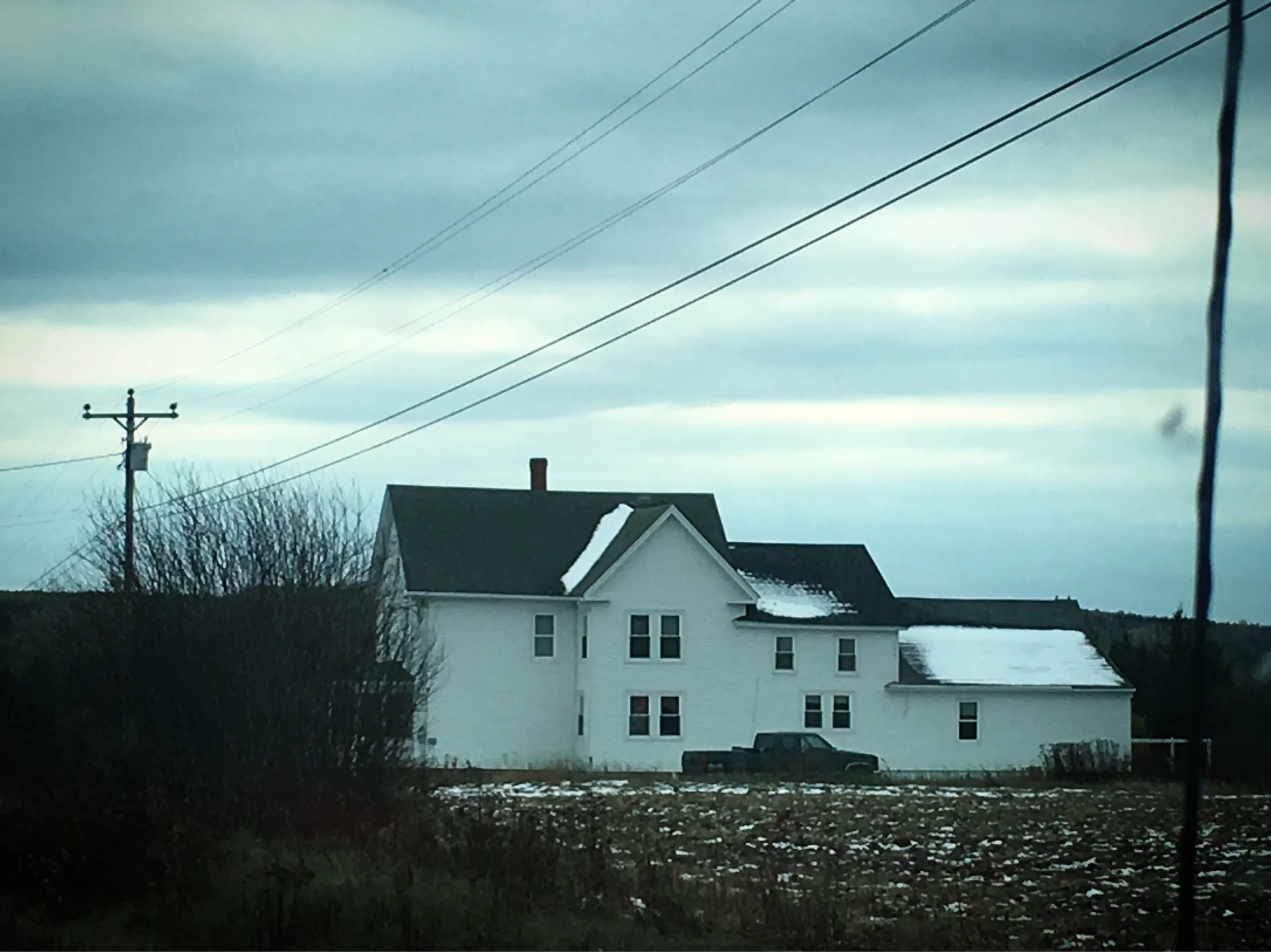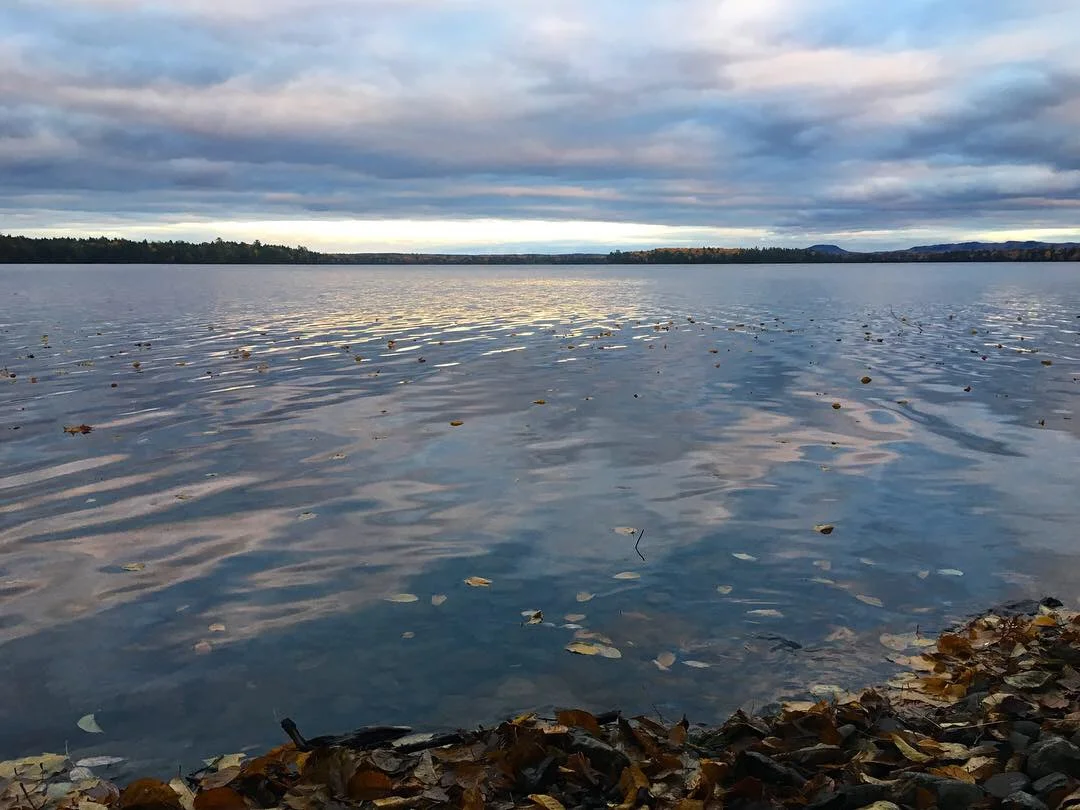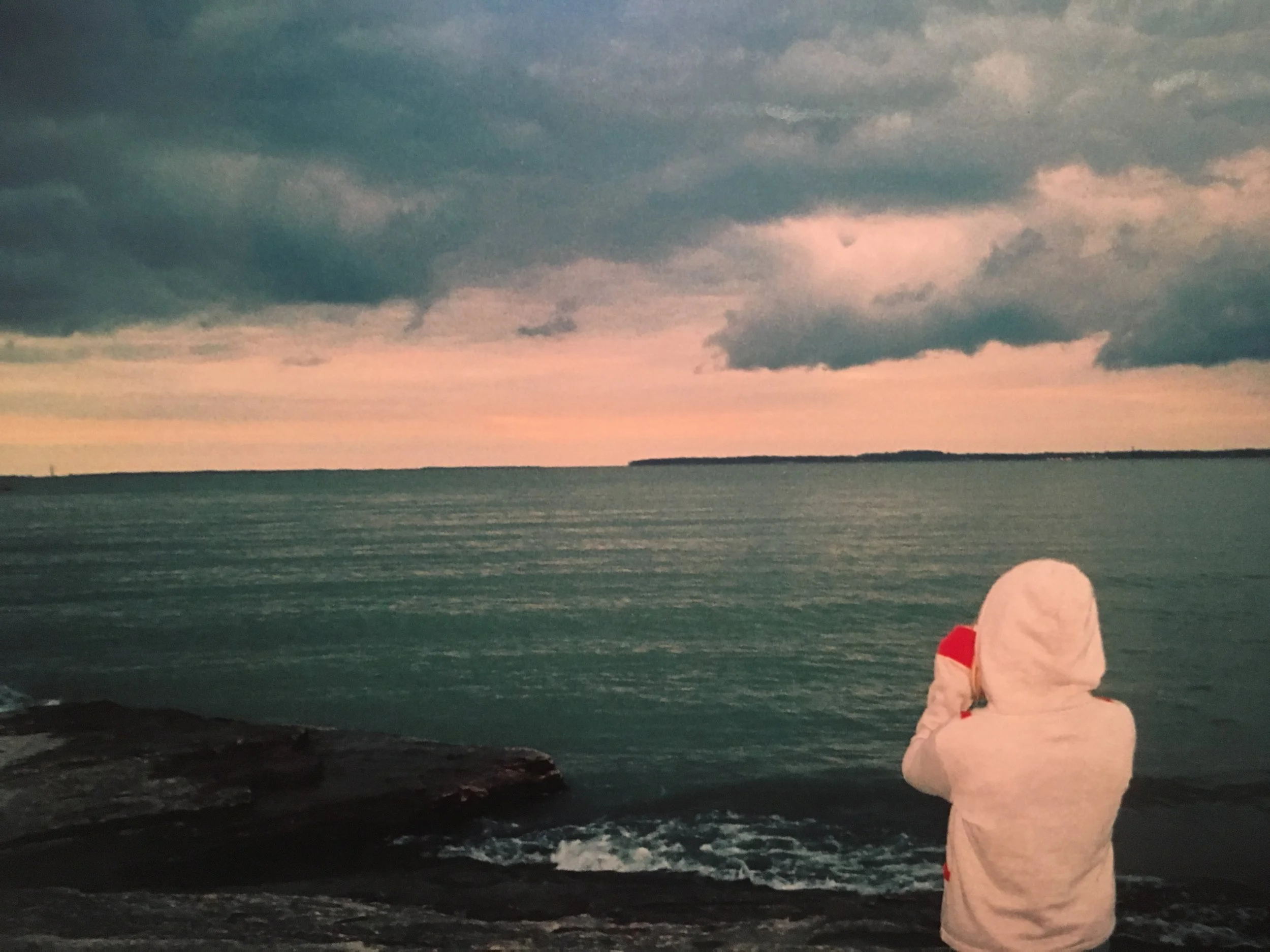The Weather
I spent Aug. 10 - Oct. 20, 2018 attending Bushcraft School off the grid in Northern Maine. This post recounts part of that journey.
“Red sky at night, sailors delight. Red sky in the morn, sailors take warn.” Most people have heard this or other old wive’s tales about how to predict the weather. It’s true that the pace of cricket chirps can tell the temperature and that a drop in pressure really can cause flare ups in achey joints.
One of the required readings for bushcraft school was Eric Sloane’s Weather Book, a 90-page illustrated guide to everything weather written by Sloane, who was also a landscape painter. The book dissects winds, tides, pressure, fronts and clouds.
Low cloud gather over Grand Lake Seboeis.
A cloud chart poster hung in the outhouse by the clothes line at bushcraft school. I enjoyed spotting the subtle differences between altostratus and nimbostratus while I did my business. Twice a day for thirty consecutive days I documented the weather as I saw it. I visited the weather station in the library, a small device connected to a weather station in town, that gave the barometric pressure trend, moon phase and temperature. I stood in the field observing the trees bend and clouds float by to determine the prevailing winds.
The weather station sat in the window of the library at bushcraft school.
I made predictions based on whether the pressure was increasing or decreasing about whether warm or cool fronts were coming and if we’d have rain. I was wrong more than I was right.
Modern life severs people from the outdoors and I was guilty as anyone of not paying particular attention to trends in weather. Author Richard Louv coined the term “nature deficit disorder” and found that kids who don’t play outside enough have weakened immune systems from a lack of microbe exposure, irregular sleep due to lack of regular melatonin, and vitamin D deficiency.
Clear weather at night means conditions are optimal for star gazing.
We as humans created a totally new environment called “indoors” that has little to no baring on what mother nature is providing outside. People used to build their houses to maximize the prevailing winds to heat and cool their homes. Architects no longer have to consider the climate when designing buildings because we have climate control. Modern buildings account for 39% of carbon emissions in the US, which is greater those from transportation or industry. People can go from their climate controlled houses to their climate controlled cars to their climate controlled offices and back, never having stepped foot outdoors all day. All while not realizing the impact of their perfectly heated and cooled lives have on climate change. Being secluded from nature is a new phenomenon for humanity in the last few generations and it has severe negative effects.
NatureRx creates humorous videos that encourage people to get a daily dose of nature to combat depression, fatigue and strength while enhancing creativity and happiness. Side effects may include euphoria, but as the faux ad states, if you are the type of person who can’t handle even the slightest discomfort, nature may not be for you. The elements can be harsh.
In Maine the weather ranged from beautiful 85 degree days when the sun felt too hot in August to below freezing with snow flurries in October when we departed. Living in a tent the wind, rain, and cold are magnified. There’s no inside place to go. You have to confront the weather and adapt. This is why it’s so important to be able to understand and predict the weather, so when it turns you have enough supplies, the chores are done and you can hunker down and ride it out.








